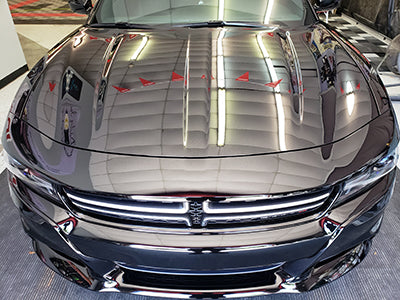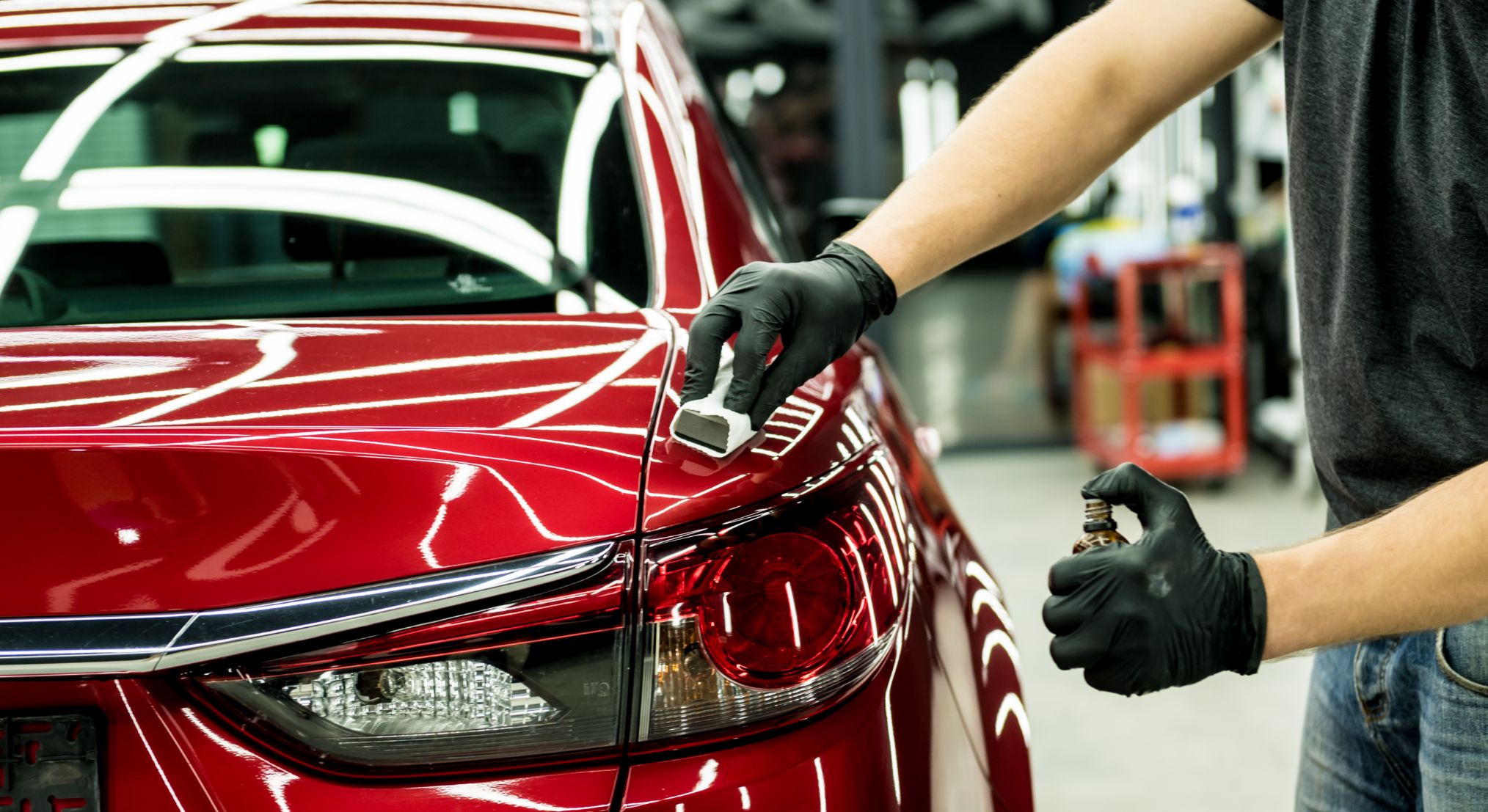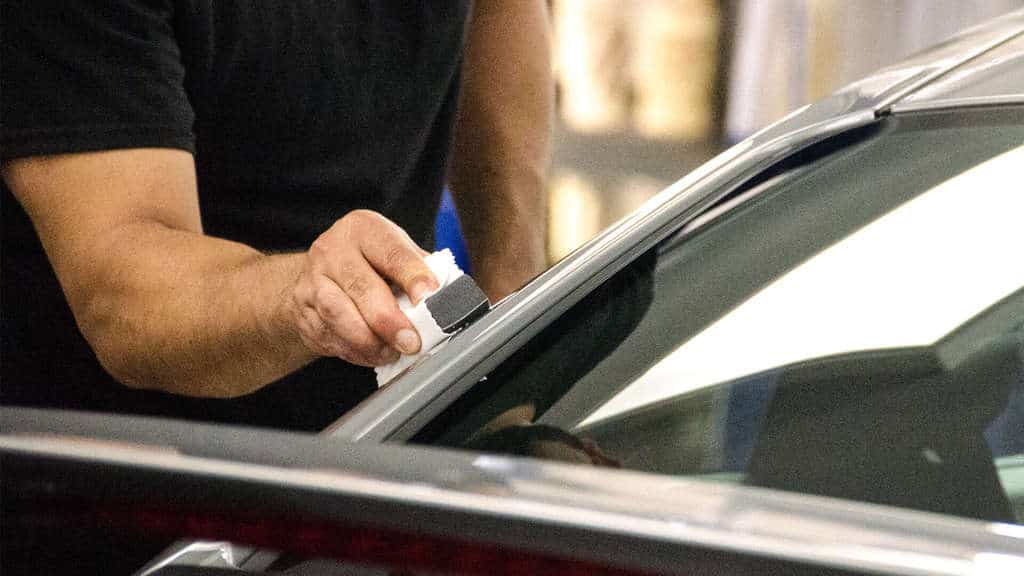Ceramic Coating vs Traditional Wax: Which Offers Better Protection?
Ceramic Coating vs Traditional Wax: Which Offers Better Protection?
Blog Article
Ceramic Finish vs. Traditional Wax: Which Gives Much Better Long-Term Defense?
The argument in between ceramic coverings and standard wax for lorry security has actually gathered considerable interest among vehicle fanatics and specialists alike. While both satisfy of protecting paint, their distinctions in toughness, application, and long-term maintenance expenses might influence a customer's choice. Ceramic finishes flaunt superior longevity and resistance to environmental factors, yet the complexity of their application raises questions about ease of access and usefulness. As we discover these contrasting alternatives, it ends up being vital to consider not just the instant benefits but likewise the ramifications for vehicle care with time.
Review of Ceramic Finish
Ceramic coating has gained substantial appeal amongst auto fanatics and detailers alike as a result of its sophisticated protective high qualities. This cutting-edge modern technology is designed to develop a long lasting, hydrophobic guard over a lorry's paint surface, considerably improving its resistance to ecological contaminants such as dust, UV rays, and chemical spots. Unlike standard wax, which supplies a short-term layer of defense, ceramic layers bond at a molecular level with the paint, offering long-lasting longevity-- commonly prolonging past two years with proper maintenance.
The application process entails careful preparation of the lorry's surface, consisting of cleaning and brightening to make sure optimum adhesion. When used, the coating remedies to create a robust layer that not just adds depth and gloss to the paint however additionally streamlines maintenance. With its hydrophobic residential or commercial properties, ceramic finish allows water and dust to slide off even more quickly, reducing the frequency of washes and decreasing the danger of swirl marks.
In addition, ceramic layers are available in numerous solutions, allowing individuals to pick items customized to their certain requirements and choices. Overall, ceramic covering stands for a significant improvement in paint security innovation, supplying premium efficiency compared to traditional alternatives.
Introduction of Standard Wax
Typically considered as a staple in vehicle treatment, wax functions as a prominent choice for those looking for an uncomplicated method to enhance and safeguard their vehicle's paint - ceramic coating. Automotive wax typically comprises natural active ingredients, such as carnauba, or artificial substances, created to produce a protective layer on the surface of the paint. This layer not just boosts the lorry's gloss and radiate but also supplies a barrier versus ecological impurities
The application of wax is usually straightforward, making it obtainable for both experts and DIY enthusiasts. As soon as applied, wax requires a healing period, after which it hardens to create a protective covering.
However, while wax works for improving the visual allure of a lorry, it is essential to note that the protection it uses might demand extra constant reapplication contrasted to different products, such as ceramic coverings. In general, typical wax remains a popular alternative for those focusing on convenience of usage and instant visual enhancement.
Resilience and Long Life Comparison
While both ceramic layers and conventional wax deal protective benefits for automobile paint, their toughness and long life vary considerably. Traditional wax, generally made from natural carnauba or synthetic polymers, generally provides a protective layer that lasts roughly 3 to 6 months. This relatively short life-span necessitates routine reapplication to keep optimal security.
In contrast, ceramic finishes are news engineered from advanced nanotechnology, developing a covalent bond with the paint surface. This causes a robust, hydrophobic layer that can endure for 2 to five years, relying on the item and ecological problems. The exceptional durability of ceramic coatings is credited to their chemical framework, which offers enhanced resistance to scratches, UV rays, and oxidation.

Defense Against Environmental Aspects
Protecting a vehicle's paint from environmental aspects is vital for preserving its look and worth over time. Autos are constantly revealed to a range of components, including UV rays, bird her explanation droppings, tree sap, acid rainfall, and roadway gunk, every one of which can jeopardize the honesty of the paintwork.
Ceramic layers supply a robust protection against these ecological aggressors. Unlike traditional wax, which can degrade swiftly under UV direct exposure, ceramic layers develop a sturdy, hydrophobic layer that withstands the unsafe effects of sunshine and environmental toxins. This advanced modern technology produces a chemical bond with the automobile's surface, supplying premium protection that lasts for several years, also in severe problems.
In comparison, ceramic coatings maintain their protective high qualities longer, significantly decreasing the risk of paint damages and making certain that the lorry preserves its aesthetic appeal. As an outcome, ceramic finishes are progressively acknowledged as the exceptional option for lasting defense versus ecological variables.
Application and Maintenance Differences
The techniques of application and succeeding upkeep for ceramic coverings and standard wax vary substantially, influencing the total user experience and efficiency of each product. Ceramic finishes call for a more complex application process, commonly involving surface prep work that includes cleaning, sanitizing, and brightening the vehicle. When the surface area prepares, the ceramic coating is used in a controlled atmosphere, commonly requiring professional competence to make sure proper treating and bonding to the paint.

While both products enhance vehicle look, the longer-lasting security used by ceramic layers may justify their preliminary financial investment, in spite of the more demanding application process. On the other hand, traditional wax continues to be a preferred option for those looking for a less complex, albeit temporary, option.

Conclusion
To conclude, ceramic finishes demonstrate considerable advantages over standard wax in regards to resilience and environmental defense. With a life-span expanding 2 to 5 years and premium resistance to UV rays, dust, and chemical discolorations, ceramic layers use an extra reliable option for long-lasting vehicle maintenance. Although the application process might call for specialist knowledge, the resulting cost financial savings and lowered frequency of reapplication underscore the value of ceramic finishes for those seeking ideal lorry protection.
The discussion between ceramic layers and typical wax for vehicle protection has garnered substantial interest amongst auto fanatics and specialists alike. Unlike standard wax, which provides a temporary layer of defense, ceramic layers bond at a molecular degree with the paint, supplying resilient longevity-- frequently prolonging beyond two years with appropriate maintenance.
While both ceramic finishes and traditional wax deal safety benefits for vehicle paint, their durability and durability vary considerably. For auto lovers seeking lasting defense, ceramic finishes offer an engaging advantage over standard wax products.
In verdict, ceramic coatings demonstrate substantial advantages over traditional wax in terms of longevity and ecological protection.
Report this page